
NPS 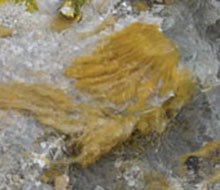
Thermal Biology Institute, Montana State University Thermophilic communities are as diverse as the communities that humans live in. Community formations, colors, and locations vary depending on the types of microbes, the pH, and the temperature of their environments. Here, we discuss the microbe communities most easily seen in Yellowstone. Millions of individual microbes can connect into long strands called filaments. Some bacteria and algae form thin and delicate structures in fast moving water such as the runoff channels of hot springs and geysers. Other microbes form thick, sturdy structures in slower water or where chemical precipitates quickly coat their filaments. A bacterium called Thermocrinis forms structures and grows by eating hydrogen gas or sulfur compounds. Its filaments entwine, forming mats. Flowing water carries other microbes, organic matter, and minerals that become caught in the streamers and add to the mat. Photosynthetic activity of Cyanobacteria such as Lyptolyngbya form columns or pedestals. Oxygen bubbles rise in the mat, forcing the microbes upward. The higher formations capture more organic matter and sediment than the lower mats, which help build the columns. Called stromatolites or microbialites, these structures are similar to ancient microbial communities preserved in formations (dated to >3.0 billion years old) around the world. Mats can be as thin as tissue paper or as thick as lasagna. Multiple layers of microorganisms make up inch-thick mats. Dozens of types of microbes from all three domains can exist in these layers. Each layer is a community, and each layer interacts with the other layers, forming a complex, larger ecosystem full of millions of microorganisms and their life processes. Changes in CommunitiesVisible and invisible changes occur in thermophile communities as light, temperature, and chemical concentrations change—both short term (within one day) and long term (seasonally). As day brightens to noon, cyanobacteria sensitive to light may move away from the surface; microbes less sensitive to light may move to the top layers of the mat. When light levels cause shifts in organisms, the community is responding to a light gradient. Temperature and chemical gradients most often affect thermophilic communities in runoff channels of geysers and in shallow outflows from hot springs. The runoff channels from Pinwheel and Whirligig geysers meet. The outer edges of both are too hot for visible thermophile communities to develop. But as Pinwheel’s water cools in the shallower channel edge, Cyanidium (an alga) can grow, forming a bright green community. Whirligig’s runoff is hotter, which prevents Cyanidium from growing, but another type of thermophile thrives by oxidizing the abundant iron in the water, thereby forming the orange/red (rust, also a form of oxidized iron) colored community. 
Thermal Biology Institute, Montana State University At the Chocolate Pots, which you can see from pullouts along the Gibbon River just north of Gibbon Meadows, iron-rich water flows from the vents. Cyanobacteria—such as Synechococcus, and Oscillatoria—thrive in this feature. The bacterial filaments form mats, in which orange-red iron oxide (rust) is captured. The iron may also be caught on the bacteria as the microbes move about within the mat. An olive green color indicates where the orange iron and green bacteria are enmeshed. Darker streaks indicate the presence of manganese. Scientists think that mixing of iron-rich waters with shallow precipitation-derived waters create the unique conditions that give rise to the large iron and manganese oxide mounds at Chocolate Pots. These are not commonly encountered in the park. Communities formed by thermophilic microbes sustain communities of larger organisms within Yellowstone’s hydrothermal areas. These communities in turn affect even larger communities of the park’s mammals. For example, bison and elk find food and warmth on the less extreme edges of high temperature environments in winter. In turn, coyotes, wolves, and bears seek prey in these areas—especially in late winter and early spring when bison and elk are weaker than at any other time of year. Whether it’s the strike of a grizzly’s paw or a shift in heat beneath the Earth, new hot springs can emerge from the subsurface while others change through both common and strange processes. Biologists continue to discover more about the individuals involved in thermophilic communities, and ecologists follow the threads of these intricate webs. 
NPS Thermophiles by Place and Color
Source: NPS DataStore Collection 7681. To search for additional information, visit the NPS DataStore. 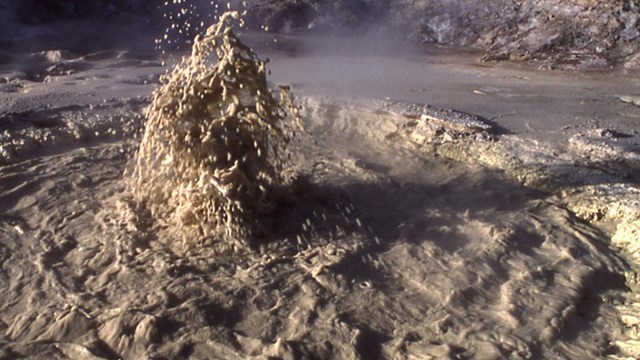
Thermophilic Archaea
Archaea are the most extreme of all extremophiles. 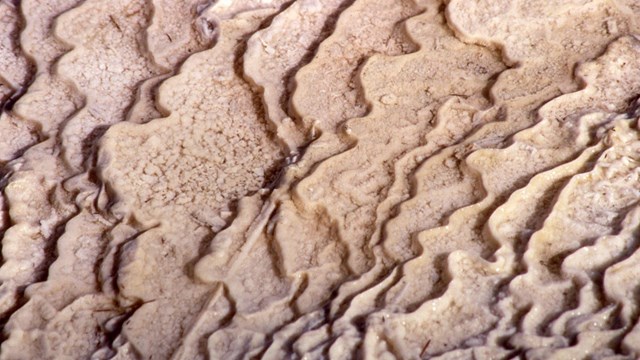
Thermophilic Bacteria
Almost all hot springs and geysers host thermophilic bacteria. 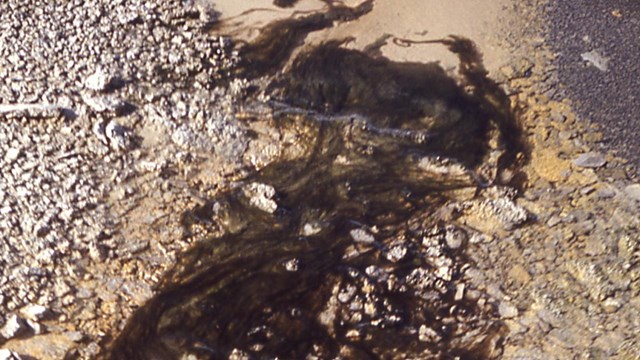
Thermophilic Eukarya
Microscopic plants and animals live in the extreme environments of Yellowstone's hydrothermal features. 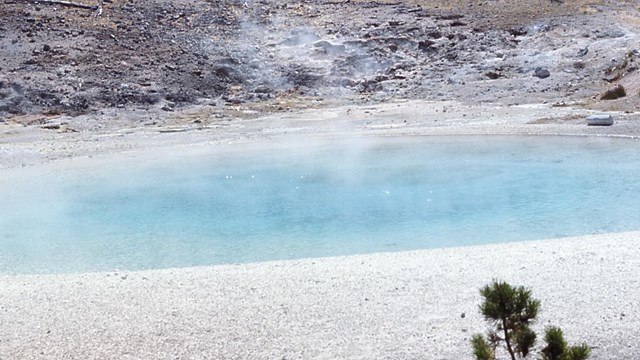
Thermophilic Viruses
Viruses, a logical part of thermophilic ecosystems, have been found in some pools in Yellowstone. 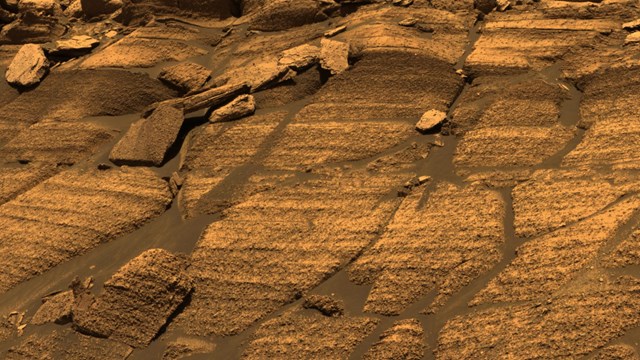
Thermophiles in Time and Space
Yellowstone's hydrothermal features and thermophilic communities are studied by scientists searching for evidence of life on other planets. 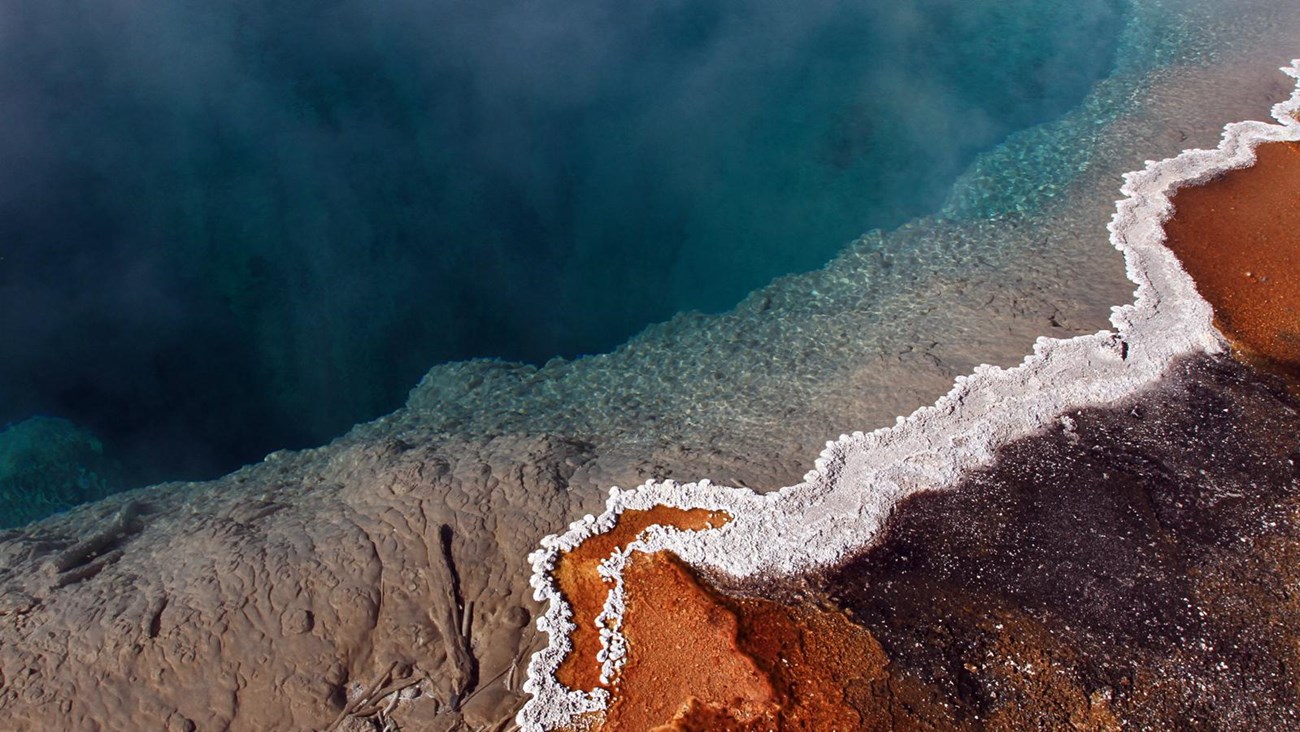
Life in Extreme Heat
Hydrothermal features are habitats for microscopic organisms called thermophiles: "thermo" for heat, "phile" for lover. | |||||||||||||||||
Last updated: April 18, 2025
